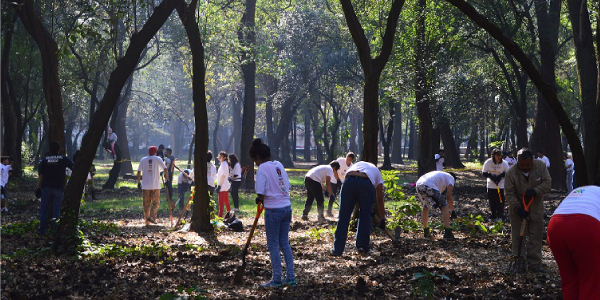2 question before planning your next nonprofit event (inglés)

Por: Barbara O’Reilly, CFRE – Network for Good
Truth be told, I have a love/hate relationship with events. I love getting dressed up to attend a fancy benefit. On the other hand, I’ve seen too many organizations host events because their leaders felt they “should.”
Without strategy or follow-up, events waste an organization’s limited resources and leave an exhausted staff in their wake. Events are also expensive. In fact, it costs 40 cents to raise $1 at an event while it costs just 15 cents to raise that same dollar through major gifts.
So, why do organizations continue to host events? Because, as Claire Axelrad wrote in her recent post, events offer an invaluable opportunity to deepen stakeholders’ engagement with your organization. That’s why more organizations are going beyond the traditional gala or golf tournament to develop events like festivals and intimate dinners to connect with donors in new and unique ways.
That leaves just one question is: how do we make the most of events? My answer is, to paraphrase John Donne, “no event is an island.” That means your events need to play a pivotal role in your organization’s overall fundraising and solicitation strategies.
Before you plan an event, ask yourself two questions:
- Does this event connect to my organization’s overall fundraising activities, donor outreach, and messaging?
- How will I maximize fundraising success at this event by leveraging my committee and sponsorships?
Let me share an example:
Say that your organization holds a large annual gala. It’s an event that your donors and larger audience look forward to every year. To answer the first question, consider how you can make this event the culmination of a series of smaller events, touchpoints, and other outreach you’ve organized throughout the year. Do you carry the same theme throughout the year? Do you ensure that donor recognition is integrated into the event? How will you introduce new attendees (and prospects) to your work?
It’s also important to consider if your attendees come away really understanding what you do. All messaging should celebrate your donors’ role in your organization’s impact as well as the vision you are inviting attendees to share with you. Conducting a surveycan be a great way to find out what your attendees learned. If they can’t share any substantive message about what you do, you’ve probably held a nice party, but not inspired your attendees to action (yet!) That’s where the follow-up that Claire suggests is essential.
Now, on to question two:
In terms of fundraising success, I like to think of a large gala like a mini-campaign. How much can you raise with that event? Do you have the capacity to set and reach a lofty fundraising goal? Set specific fundraising targets for the event co-chairs, committee, Board, and even honorees, if possible. Give your host committee clear expectations of what you want each member to “give and get.” This creates a blueprint that will hopefully drive a sense each person’s role in the event’s success. It also helps you determine the three kinds of host committee members you need:
- Those who have the personal capacity and networks connect you with sponsors.
- Those who are the “worker bees” without capacity and networks.
- Those who will only give their name and nothing else.
The ideal event leadership committee should be a balance of all three kinds of volunteers.
Then, take a look at the event’s sponsor giving levels. Are the benefits and recognition opportunities appealing and easy for you to deliver? Just as you create a campaign prospect pipeline comprised of many more prospects than gifts needed, review previous event sponsors as well as those who declined sponsorship offers in the past. Then and, most important, draw on your host committee’s networks to expand your reach and ensure you have more than enough prospects to solicit for each sponsor level.
Finally, if your events really are an integrated part of your fundraising, your sponsorships asks should be tied to overall donor strategies. When you identify an event sponsor, list all the ways you would like that donor to support your organization that year. These may include:
- Sponsoring another event.
- Supporting a particular program that interests them.
- Giving an unrestricted annual gift (which I recommend is an automatic ask of all event sponsors).
Meet with past event sponsors early in your fiscal year and share with them the full menu of funding requests you’d like them to consider. That enables you to make one ask—avoiding the multiple solicitation syndrome—and shows the donor that you have thought through all the ways they can be engaged in your work. It can also help you better forecast your fiscal year event revenue because you are asking early enough in the year.
There’s no question that events are a lot of work. But they can be profitable for you in terms of revenue and volunteer engagement if you use them as one part of your overall development strategy.
Fuente: Network for Good




